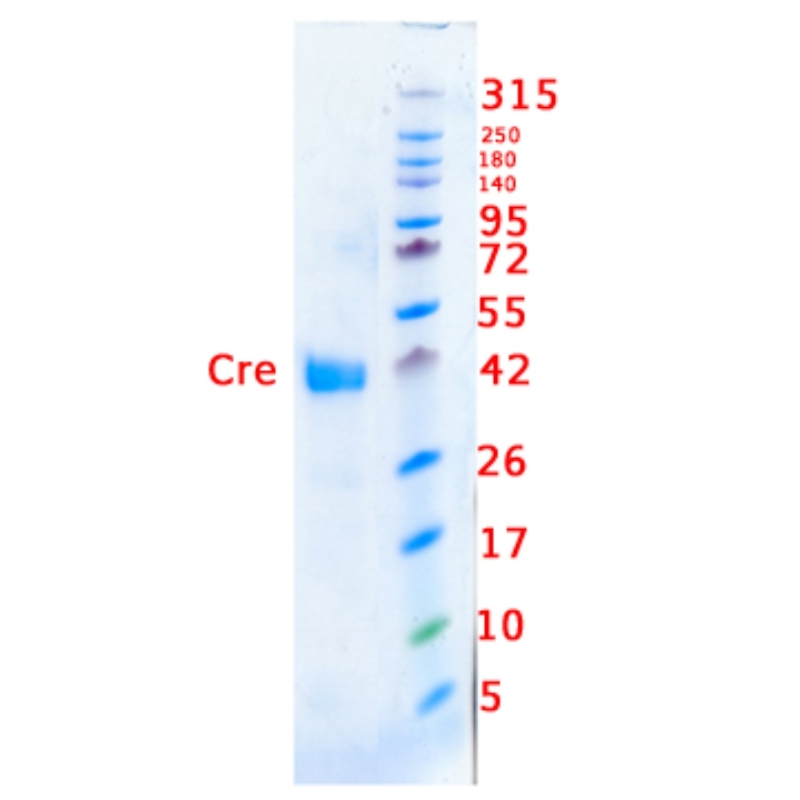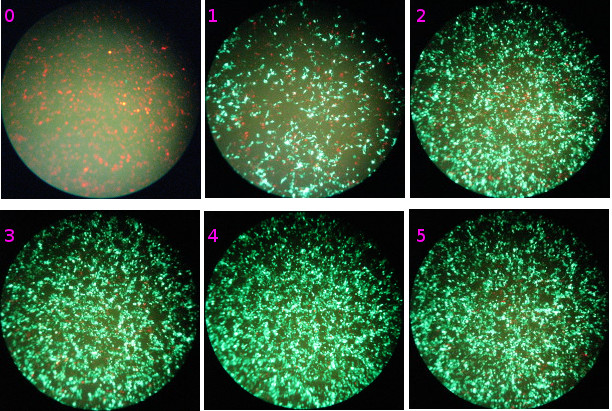 View larger
View larger Cre Recombinase RP-7, TAT-Cre (Tat-NLS-Cre, HTNC, HTNCre)
EG1001-RP7
Cre recombinase, often abbreviated to Cre, is a Type I topoisomerase from P1 bacteriophage that catalyzes site-specific recombination of DNA between loxP sites. This enzyme does not require any energy cofactors, and Cre-mediated recombination quickly reaches equilibrium between substrate and reaction products.
Applications :
- In vitro LoxP recombination for subcloning or vector/clone engineering
- Transduction into cultured cells including stem cells ex vivo
Description
The loxP recognition element is a 34 base pair (bp) sequence composed of two 13 bp inverted repeats flanking an 8 bp spacer region which confers directionality. Recombination products are dependent on the location and relative orientation of the loxP sites. Two DNA species containing single loxP sites will be fused whilst DNA between loxP sites in the same orientation will be excised in circular form and DNA between opposing loxP sites will be inverted with respect to the rest of the DNA.
Cre recombinase is used as a tool to modify genes and chromosomes. In this approach the Cre recombinase is used to delete a segment of DNA flanked by LoxP sites (aka 'floxed') in an experimental animal. It has been used to generate animals with mutations limited to certain cell types (tissue-specific knockout) or animals with mutations that can be activated by drug administration (inducible knockout) in a number of transgenic species. The availability of transgenic lines with tissue specific or inducible Cre expression permits researchers to inactivate or activate a gene of interest simply by breeding a floxed animal to pre-existing Cre-transgenics. One example of an inducible Cre recombinase system is the Cre-ER (ER = Estrogen Receptor) system in which intraperitoneal injection of tamoxifen will cause dose-dependent excision of the floxed site (i.e. will inactivate the gene of choice).
Recombinant Cre recombinase (TAT-Cre) was purified from an E. coli strain carrying an engineered plasmid encoding enhanced form of Cre Recombinase from bacteriophage P1. This Cre recombinase has an N-terminal 6XHis tag, a Tat peptide (GRKKRRQRRRPPAGTSVSL) and an NLS sequence (PKKKRKV). HTNC is the most effective protein in transduction (in vivo) and subsequent recombination compared to other forms of Cre recombinases, e.g., HNC, TCH6, HC, HNCM, CH. Incubation of fibroblast reporter cells with 1 μM HTNC for 1 to 2 hours can result in tranduction of 60 ~ 90% of the cells. Addition of 100 μM choroquine to culture medium can further enhance transduction and recombination.
![]()
Properties

Concentration : 2, 5, or 10 mg/ml
Molecular Weight : 43 kDa
Endotoxin Levels : < 0.1 EU/μg
Purity : >98% by SDS-PAGE and HPLC analysis
QC : Tat-Cre induced 80~100% recombination efficiencies in HEK293T- Cre reporter cells. HEK293T-cells were transfected with reporter plasmid DNA : LoxP-RFP-Stop-LoxP-GFP, then add 1 μM purified Tat-Cre protein.

